Which of the following is a V-T curve for isobaric process?
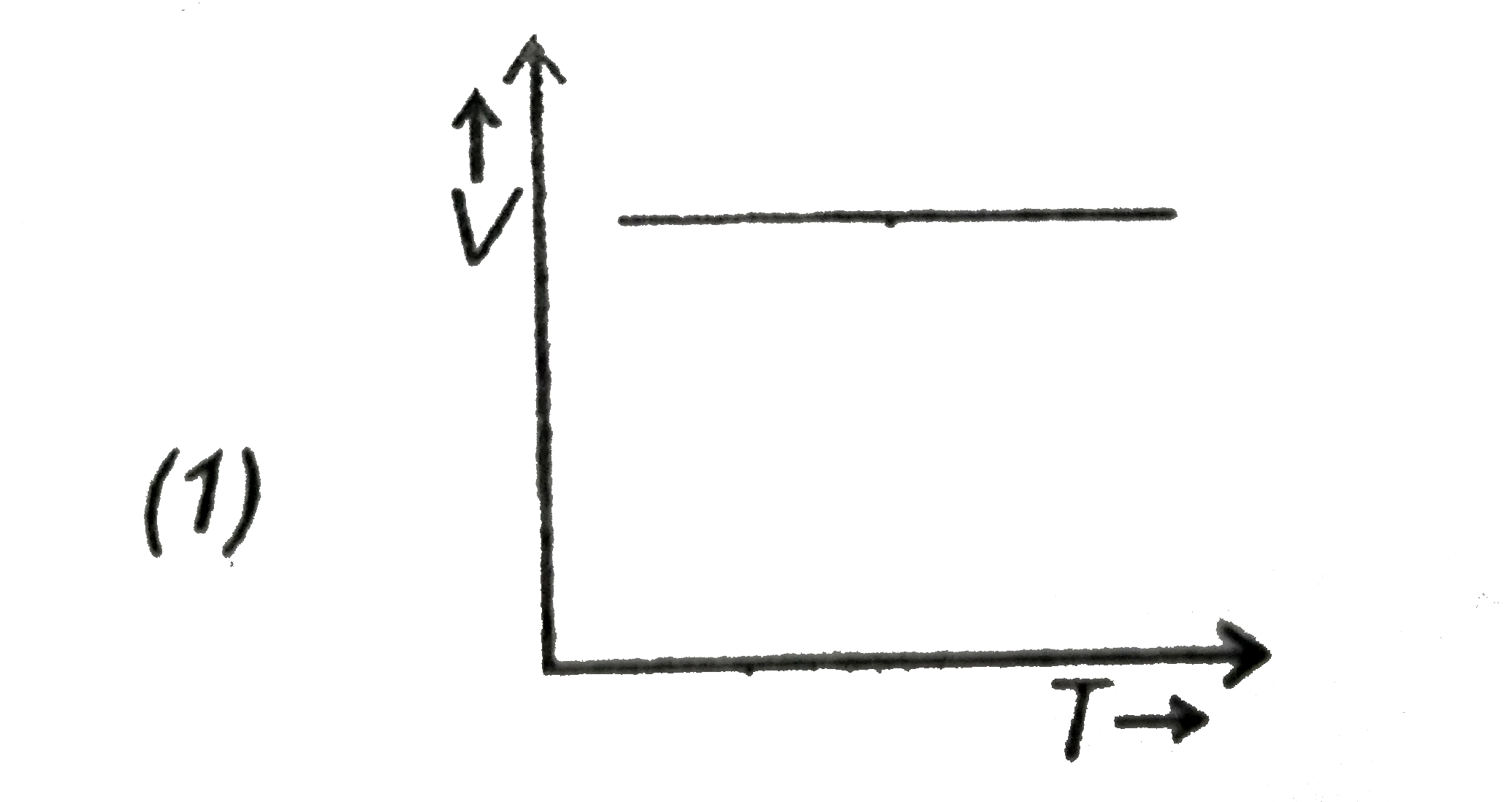
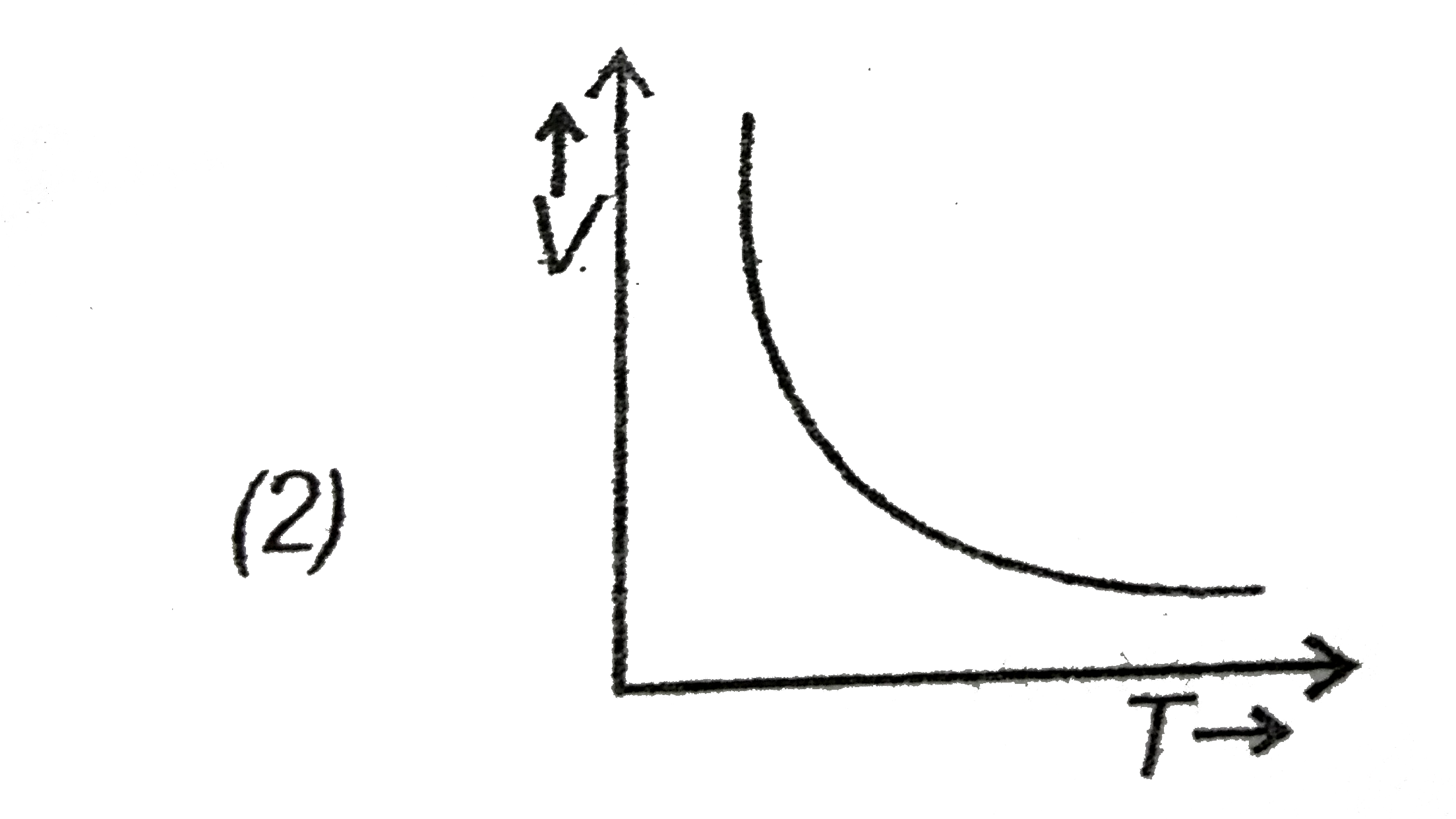
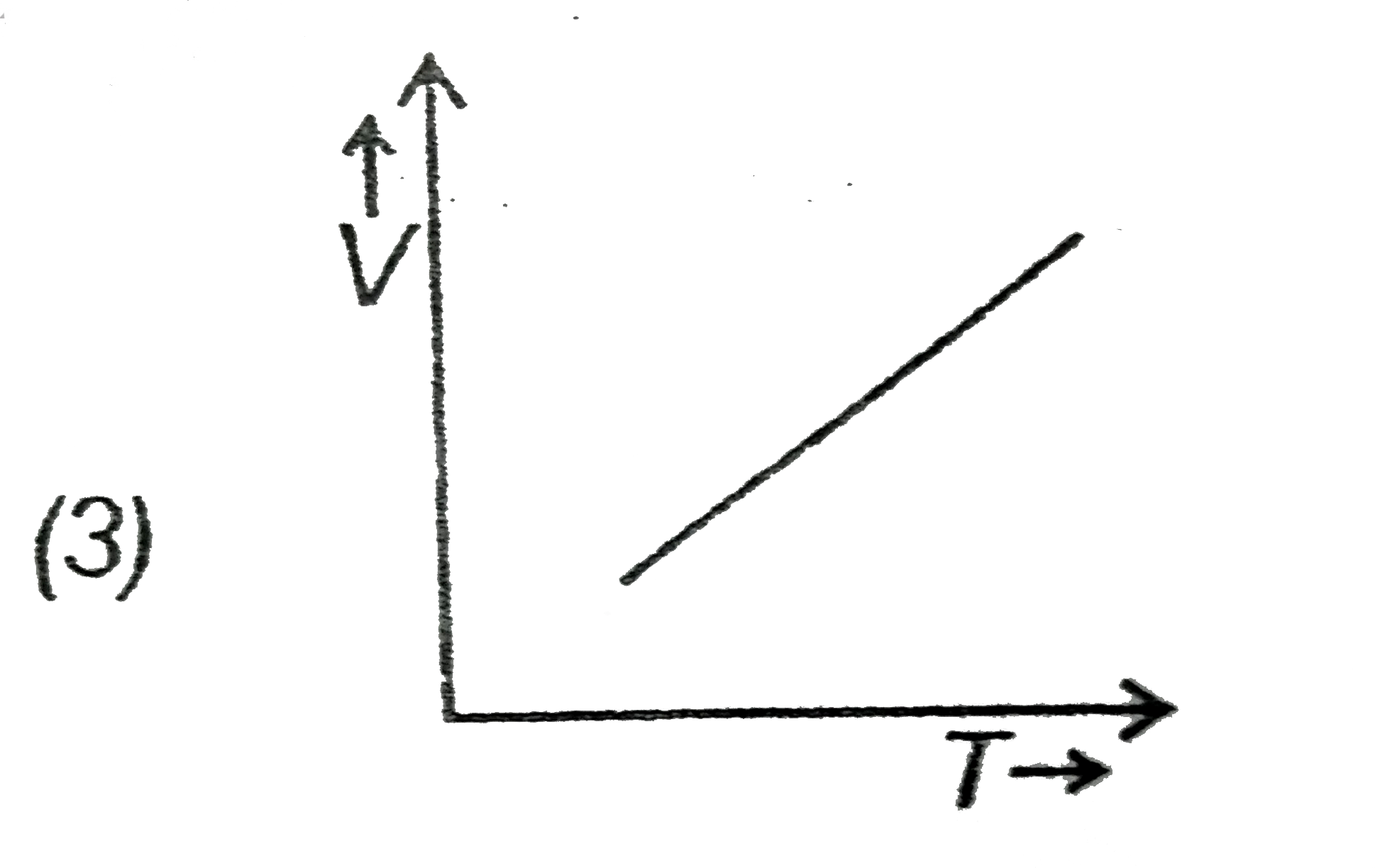
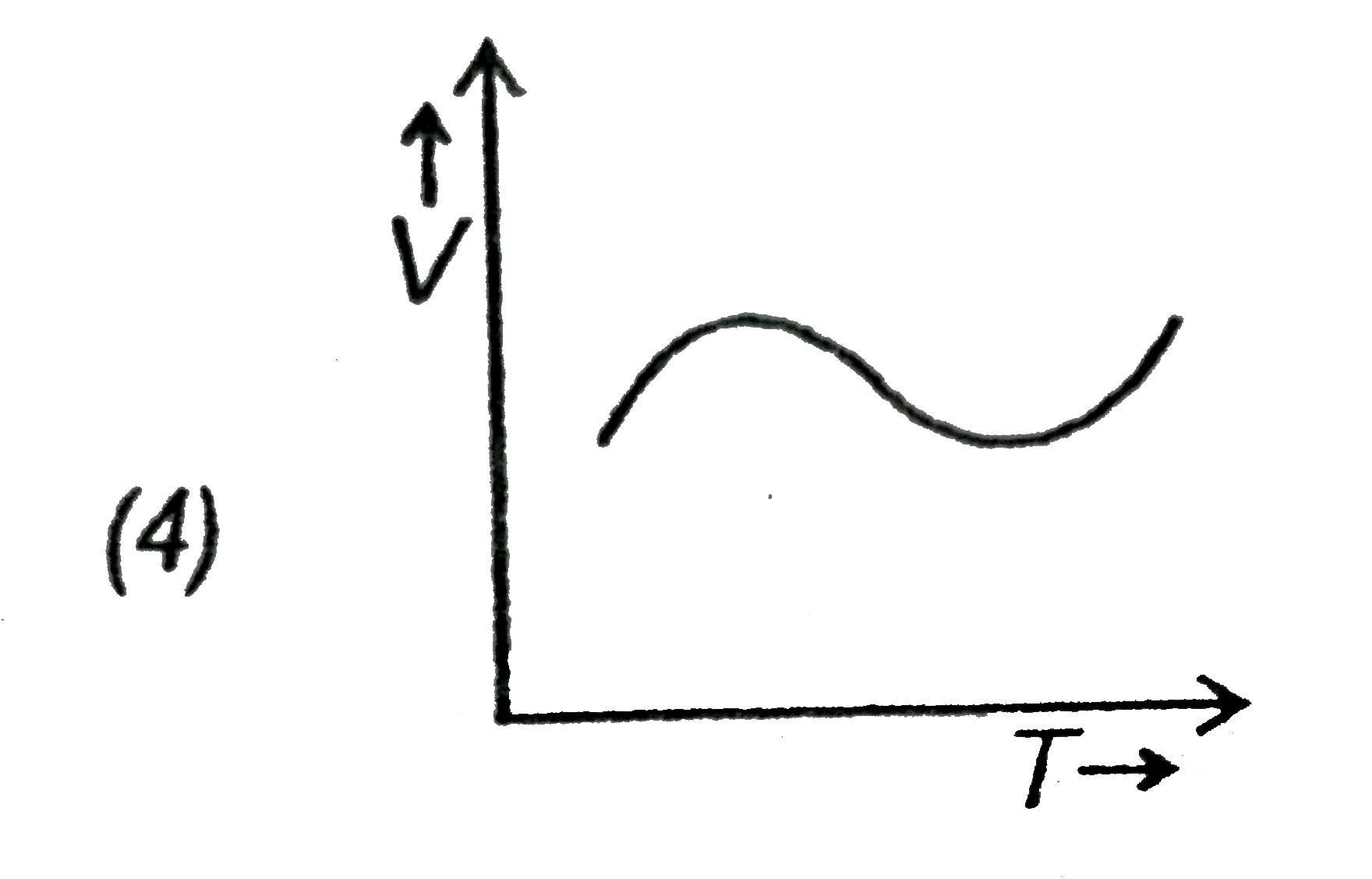
The correct Answer is:C
To determine which of the given V-T curves represents an isobaric process, we need to understand the characteristics of such a process.
1. Understand the Isobaric Process:
An isobaric process is one where the pressure (P) remains constant throughout the process. This means that as the volume (V) changes, the temperature (T) will also change, but the pressure will not.
2. Ideal Gas Law:
The ideal gas law is given by the equation:
PV=nRT
where P is pressure, V is volume, n is the number of moles, R is the ideal gas constant, and T is temperature.
3. Rearranging the Ideal Gas Law:
For an isobaric process, since pressure is constant, we can express the relationship between volume and temperature as:
V=nRPT
Let’s denote nRP as a constant k. Thus, we can rewrite the equation as:
V=kT
4. Identifying the Graph:
The equation V=kT is in the form of a linear equation y=mx, where V is the dependent variable (y-axis) and T is the independent variable (x-axis). This indicates that the graph will be a straight line that passes through the origin.
5. Analyzing the Given Options:
- Option 1: Straight line - This could represent an isobaric process.
- Option 2: Parabola - This does not represent an isobaric process.
- Option 3: Random shape - This does not represent an isobaric process.
- Option 4: Another curve - This does not represent an isobaric process.
6. Conclusion:
Since the only option that represents a linear relationship between volume and temperature is Option 1, this is the correct answer for the V-T curve of an isobaric process.
Final Answer:
Option 1 is the V-T curve for an isobaric process.
An isobaric process is one where the pressure (P) remains constant throughout the process. This means that as the volume (V) changes, the temperature (T) will also change, but the pressure will not.
The ideal gas law is given by the equation:
PV=nRT
where P is pressure, V is volume, n is the number of moles, R is the ideal gas constant, and T is temperature.
For an isobaric process, since pressure is constant, we can express the relationship between volume and temperature as:
V=nRPT
Let’s denote nRP as a constant k. Thus, we can rewrite the equation as:
V=kT
The equation V=kT is in the form of a linear equation y=mx, where V is the dependent variable (y-axis) and T is the independent variable (x-axis). This indicates that the graph will be a straight line that passes through the origin.
- Option 1: Straight line - This could represent an isobaric process.
- Option 2: Parabola - This does not represent an isobaric process.
- Option 3: Random shape - This does not represent an isobaric process.
- Option 4: Another curve - This does not represent an isobaric process.
Since the only option that represents a linear relationship between volume and temperature is Option 1, this is the correct answer for the V-T curve of an isobaric process.
Option 1 is the V-T curve for an isobaric process.
Topper's Solved these Questions
- THERMODYNAMICSBOOK - AAKASH INSTITUTE ENGLISHCHAPTER - THERMODYNAMICSEXERCISE - Try Youself
13 Videos
- THERMODYNAMICSBOOK - AAKASH INSTITUTE ENGLISHCHAPTER - THERMODYNAMICSEXERCISE - Assignment (Section-A) Objective Type Questions (one option is correct)
50 Videos
- THERMAL PROPERTIES OF MATTERBOOK - AAKASH INSTITUTE ENGLISHCHAPTER - THERMAL PROPERTIES OF MATTEREXERCISE - Assignment (Section-J) Akash Challengers Questions
7 Videos
- UNITS AND MEASUREMENTSBOOK - AAKASH INSTITUTE ENGLISHCHAPTER - UNITS AND MEASUREMENTSEXERCISE - ASSIGNMENT (SECTION - D)
15 Videos
Similar Questions
Draw at P-T curve for isobaric process.
View SolutionDraw at P-T curve for isobaric process.
View SolutionDraw at P-T curve for isochoric process.
View SolutionDraw at P-T curve for isochoric process.
View SolutionFor a given thermodynamic process, the P – V diagram is as shown below:
Which of the following is the V – T diagram for the process?
A→B: isobaric
B→C: adiabatic
C→A : isothermal
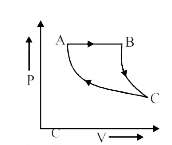
View SolutionWhich of the following pairs represents isobars?
View SolutionA cyclic process ABCD is shown in the V−T diagram. Which of the following curves represent the same process ?
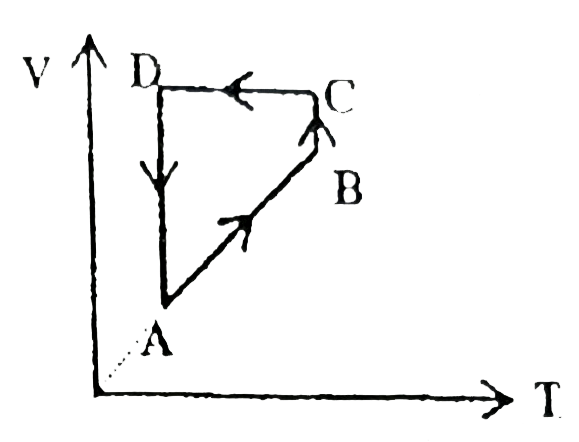
View SolutionA cyclic process ABCD is shown in the P−V diagram. Which of the following curves represents the same process?

View SolutionA cyclic process ABCD is shown in the P−V diagram. Which of the following curves represents the same process?

View Solution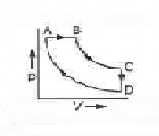
A cyclic process ABCD is shown in the p-V diagram. Which of the following curves represent the same process?
View Solution
